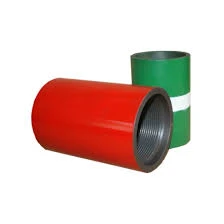- Afrikaans
- Albanian
- Amharic
- Arabic
- Armenian
- Azerbaijani
- Basque
- Belarusian
- Bengali
- Bosnian
- Bulgarian
- Catalan
- Cebuano
- Corsican
- Croatian
- Czech
- Danish
- Dutch
- English
- Esperanto
- Estonian
- Finnish
- French
- Frisian
- Galician
- Georgian
- German
- Greek
- Gujarati
- Haitian Creole
- hausa
- hawaiian
- Hebrew
- Hindi
- Miao
- Hungarian
- Icelandic
- igbo
- Indonesian
- irish
- Italian
- Japanese
- Javanese
- Kannada
- kazakh
- Khmer
- Rwandese
- Korean
- Kurdish
- Kyrgyz
- Lao
- Latin
- Latvian
- Lithuanian
- Luxembourgish
- Macedonian
- Malgashi
- Malay
- Malayalam
- Maltese
- Maori
- Marathi
- Mongolian
- Myanmar
- Nepali
- Norwegian
- Norwegian
- Occitan
- Pashto
- Persian
- Polish
- Portuguese
- Punjabi
- Romanian
- Russian
- Samoan
- Scottish Gaelic
- Serbian
- Sesotho
- Shona
- Sindhi
- Sinhala
- Slovak
- Slovenian
- Somali
- Spanish
- Sundanese
- Swahili
- Swedish
- Tagalog
- Tajik
- Tamil
- Tatar
- Telugu
- Thai
- Turkish
- Turkmen
- Ukrainian
- Urdu
- Uighur
- Uzbek
- Vietnamese
- Welsh
- Bantu
- Yiddish
- Yoruba
- Zulu
Compression Tubing Coupler for Efficient Fluid Transfer and Connection Solutions
Understanding Compression Tubing Couplers An Essential Component in Fluid Systems
In the realm of fluid management and control systems, the significance of robust and reliable connections cannot be overstated. Whether in industrial processes, hydraulic systems, or plumbing applications, the integrity of fluid transport systems often hinges on the quality of the components used. One such critical component is the compression tubing coupler. This article delves into the features, advantages, and applications of compression tubing couplers, providing a comprehensive understanding of their role in various systems.
What is a Compression Tubing Coupler?
A compression tubing coupler is a type of fitting designed to connect two lengths of tubing or pipe. It works by physical compression, which creates a tight seal and ensures that fluids can be transported without leaks or losses. These couplers are typically made from durable materials such as brass, stainless steel, or plastic, allowing them to resist corrosion and withstand varying pressures.
The design of a compression coupler features several key components, including a body, a compression ring (or ferrule), and a nut. When the nut is tightened around the tubing, the compression ring is pressed against the tubing, creating a seal that prevents fluid from leaking out. This ingeniously simple mechanism provides a reliable connection that can be easily assembled and disassembled without the need for specialized tools.
Advantages of Compression Tubing Couplers
1. Ease of Installation One of the standout features of compression couplers is their ease of installation. Unlike welded fittings, compression couplers do not require specialized equipment or expertise, making them a popular choice for both professionals and DIY enthusiasts.
2. Versatility Compression couplers can be used with various types of tubing, including copper, plastic, and aluminum. This versatility makes them suitable for a wide range of applications, from residential plumbing to complex industrial systems.
3. Leak Resistance The design of compression couplers creates a secure seal that minimizes the risk of leaks. This is critical in applications where fluid loss can lead to inefficiencies or safety hazards.
4. Reusability Compression fittings can often be reused multiple times without compromising their performance. This can lead to cost savings and reduced material waste, particularly in environments where system modifications are common.
compression tubing coupler

5. Pressure and Temperature Tolerance Many compression couplers are designed to withstand significant pressure and temperature variations, making them suitable for high-demand applications such as hydraulic and pneumatic systems.
Applications of Compression Tubing Couplers
Compression tubing couplers find applications across various sectors, including
- Plumbing In residential and commercial plumbing, compression couplers are used to connect water supply lines, often found in sink and toilet installations. Their leak-proof nature ensures reliable water delivery.
- Hydraulics In hydraulic systems, compression couplers are vital for connecting different components of the system, such as hoses and cylinders. Their ability to handle high pressures makes them ideal for these applications.
- Automotive Compression couplers are frequently employed in automotive systems, particularly in fuel and oil lines, where secure and leak-free connections are essential for safety and performance.
- Industrial Processes In various manufacturing processes, compression couplers are used to connect tubes that transport gases or liquids. Their durability and reliability are critical in ensuring smooth operations.
Conclusion
Compression tubing couplers are indispensable components of fluid control systems, providing secure and reliable connections across various applications. Their ease of installation, versatility, and leak resistance make them a preferred choice among professionals and DIY enthusiasts alike. As industries continue to evolve and demand more efficient and effective fluid management solutions, the role of compression tubing couplers will undoubtedly remain significant. As technology advances, innovations in materials and design may further enhance the performance and capabilities of these vital components, ensuring that they continue to meet the needs of diverse applications in the future.
-
Tubing Pup Joints: Essential Components for Oil and Gas OperationsNewsJul.10,2025
-
Pup Joints: Essential Components for Reliable Drilling OperationsNewsJul.10,2025
-
Pipe Couplings: Connecting Your World EfficientlyNewsJul.10,2025
-
Mastering Oilfield Operations with Quality Tubing and CasingNewsJul.10,2025
-
High-Quality Casing Couplings for Every NeedNewsJul.10,2025
-
Boost Your Drilling Efficiency with Premium Crossover Tools & Seating NipplesNewsJul.10,2025







